Historic Tour & Photo Gallery
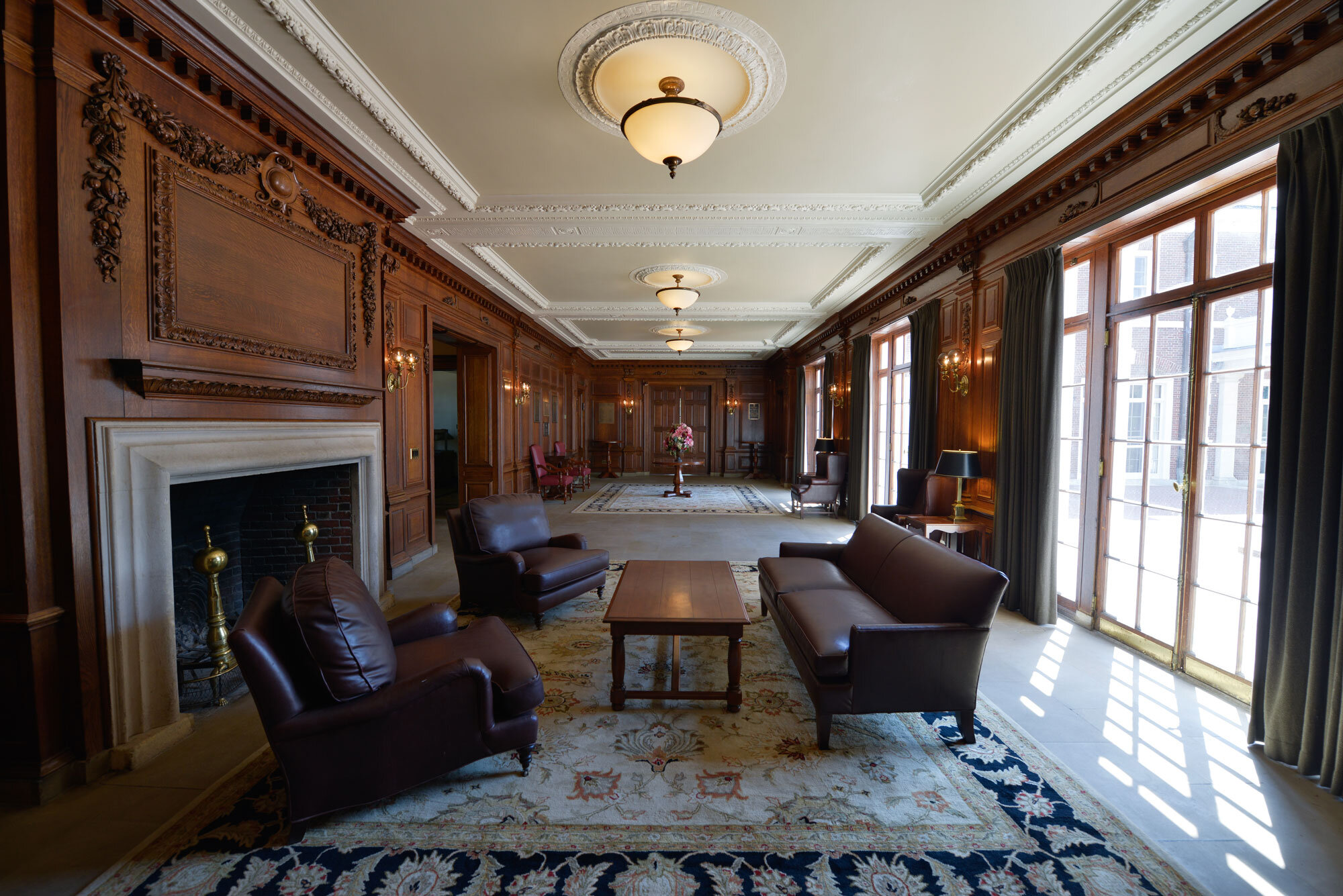
Construction was completed in 1906 but the custom interiors were completed in later years. McKim felt that the interiors should preserve the privacy and comfort that the sons of New York club members might expect. The plan is closest to that of an Italian villa. The courtyard is the focus of the plan and all primary rooms on the ground floor open to the courtyard. McKim’s perfectionism is evident in the proportions and details throughout. All of the oak paneling and stone floor are imported from England. Morant & Company supplied the paneling and modeled it on the measured details from Hampton Court and Kensington Palace. The woodwork over the fireplace is an adaptation of a carving in the South Kensington Museum.
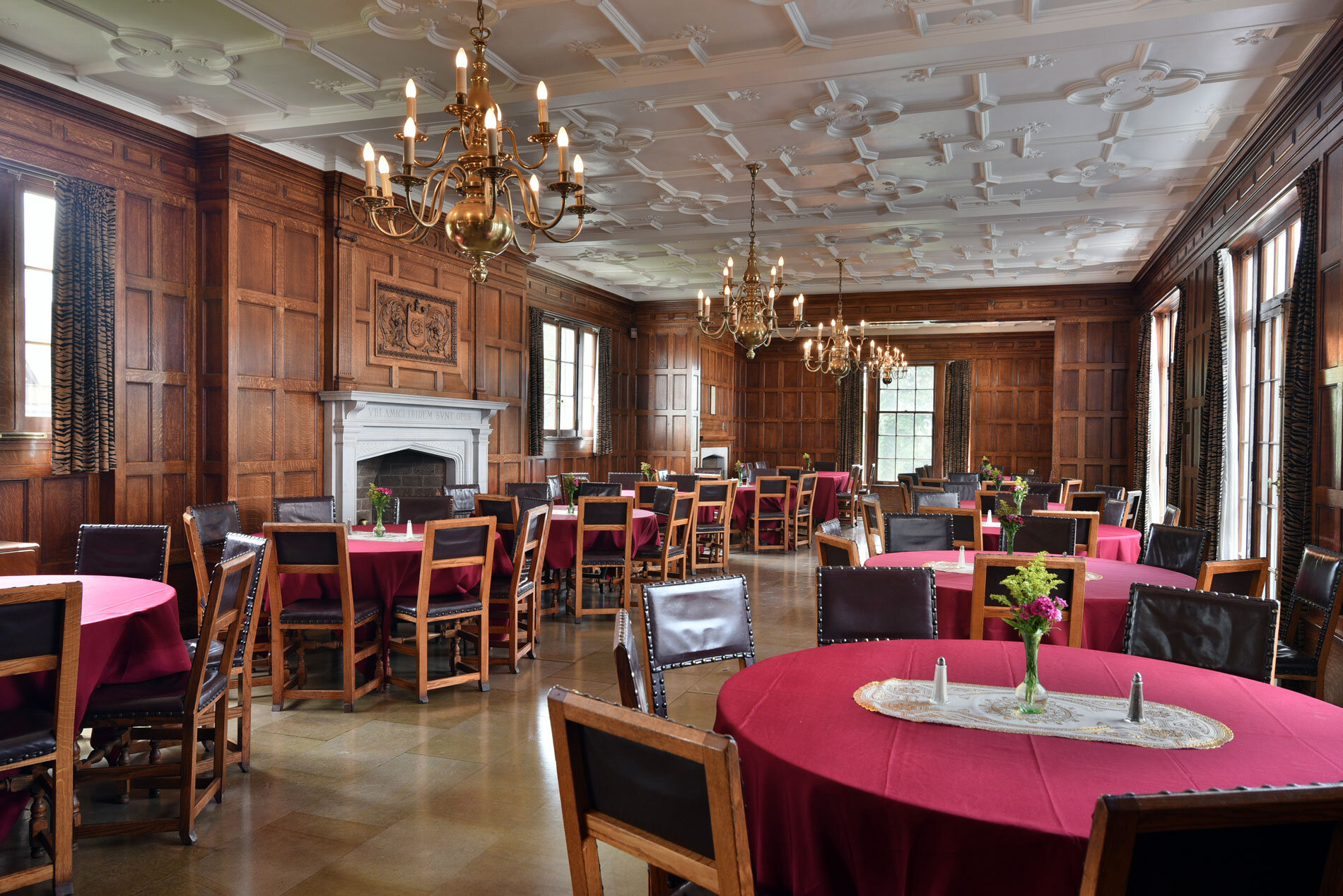
This is the main club room on the ground floor. Designed to be similar to the Club room at the University Club in NY but one-quarter of the size. Most Princeton men of that era were closely connected with the University Club. The Dining Room, where all meals are served, was originally serviced by waiters and each member was greeted by name upon entering. Current Cottage custom encourages members to take the first available seat in the dining room to encourage new friendships and conversation. The Kitchen is located on the second floor (common club design in the early 1900’s to keep heat from cooking elements away from the diners) and is linked to the dining room and serving pantry via elevator and dumbwaiter. Wood and plaster ceiling details were added in 1916 by the architect. The dining room space boasts of three fireplaces with the following mottos: They Take the Sun from the World Who Take Friends from Life; Ubi Amici Ibidem Sunt Opes ‘Where there are friends there are riches’; Out of Many Make One.
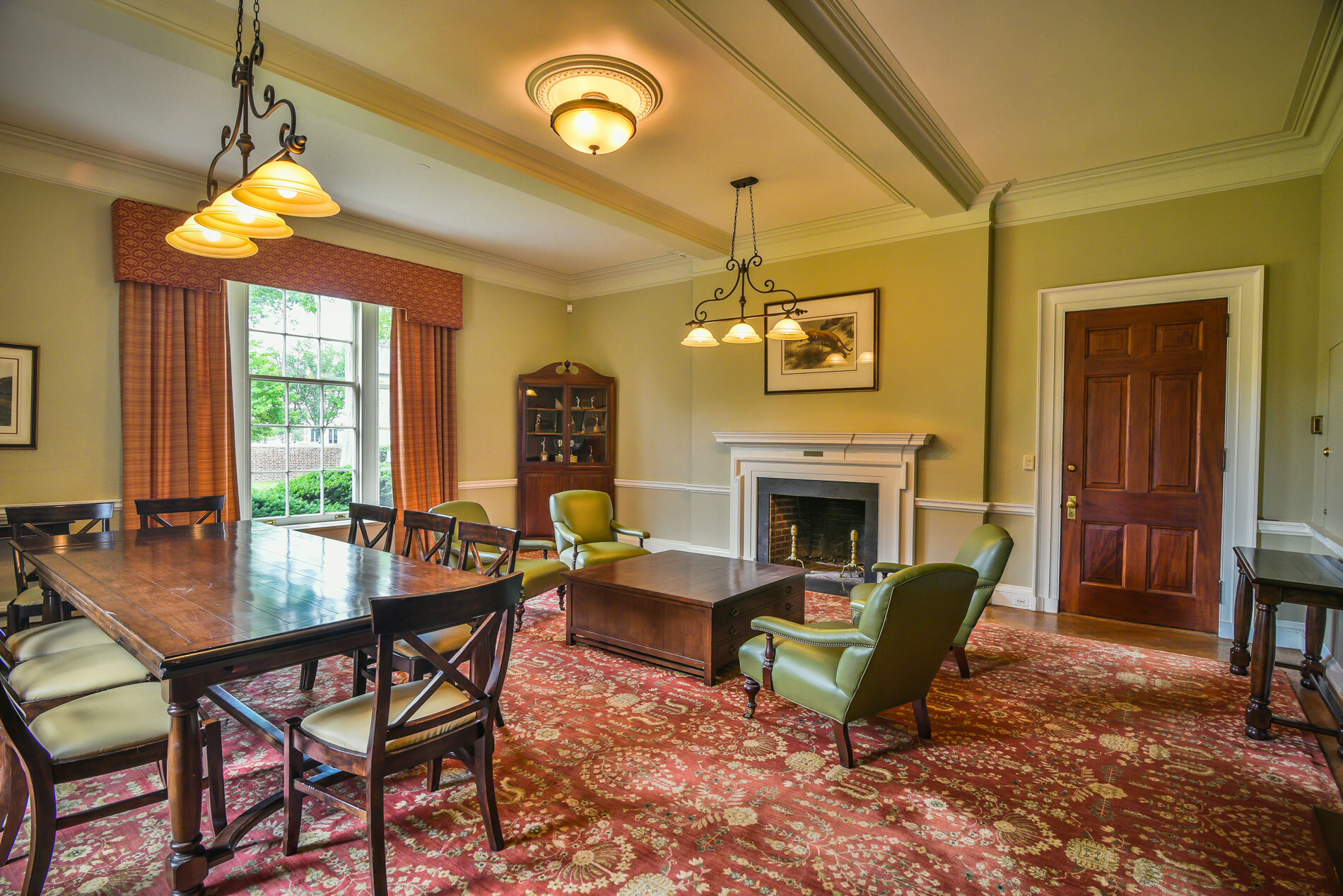
Originally called the Reading Room, it has become known as the Tiger Room. Used for music and card games, now used for student discussions and quiet study.
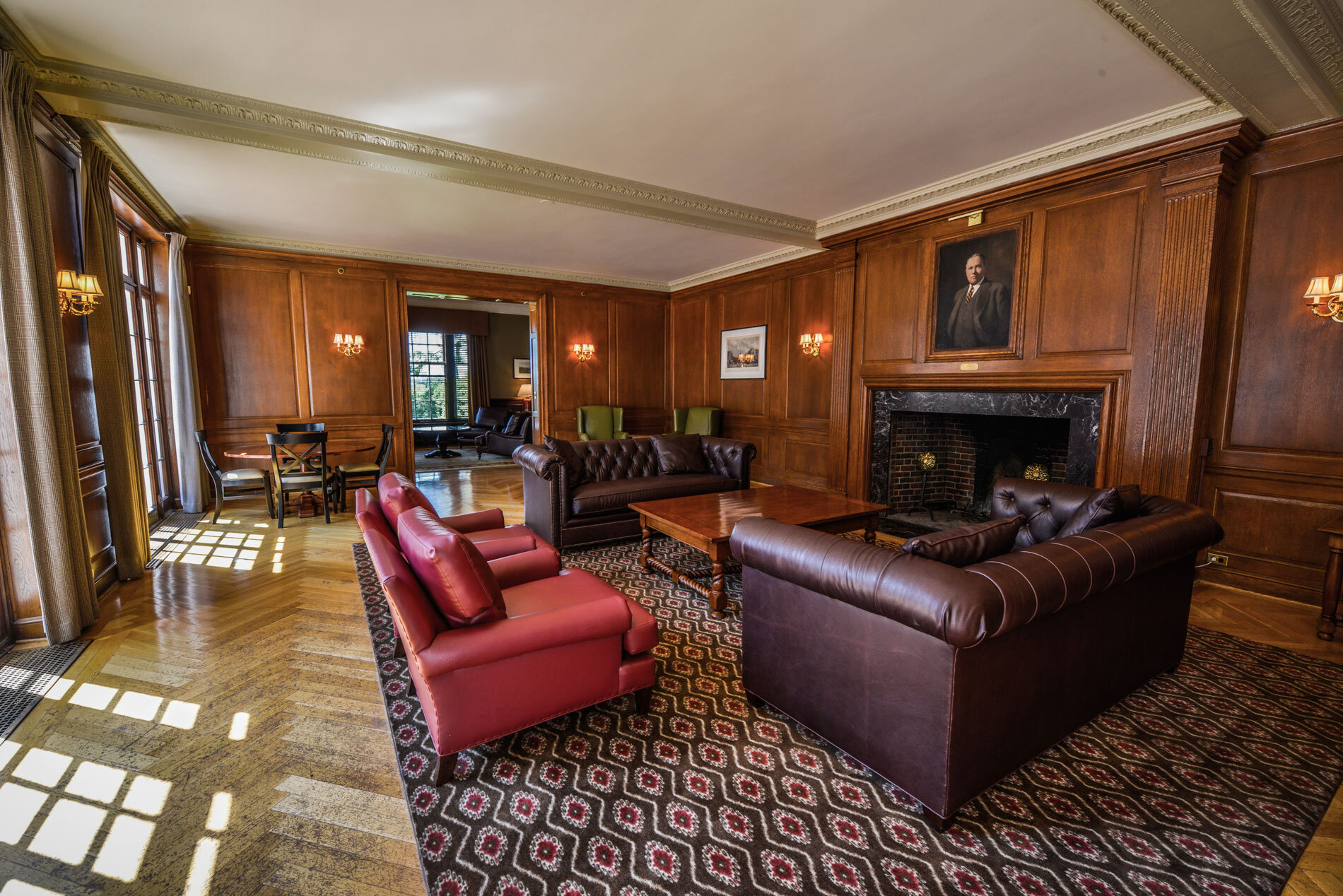
This room was originally the Billiards Room, hence the ceiling divisions and trim work. This accented the elongated shape of the pool tables. The oak paneling was added in 1948. Stephen S. Palmer, father of Edgar Palmer (1903), originally put up $65,000 for the building of the new club with the provision that $35,000 was raised by the members. Members raised much more than this amount. Palmer was so impressed by this that he increased his donation to $110,000. Mr. Palmer wanted the best for his only son, Edgar. Some examples are the use of solid white marble columns, white marble banding and quoining. All materials were imported from Italy. In his 1994 publication, Club Life at Princeton, William Selden writes, ‘Although the interior of the club house was not finished for several years, the building has been recognized from the beginning as a significant architectural contribution, and has been consistently maintained with great pride and solicitous care by its members.’

The design of the rear façade maximizes the southern exposure and extends into the landscape. Imagine the views of the early 1900’s, when one could see clearly to the Stony Brook and newly formed Carnegie Lake. F. Scott Fitzgerald, Class of 1917, is perhaps the person most popularly associated with Cottage Club. His first novel, This Side of Paradise, which is autobiographical, was started in the library upstairs. In it he mentions the club… “June came and the days grew so hot and lazy that they could not worry even about exams, but spent dreamy evenings on the court of Cottage, talking of long subjects until the sweep of country toward Stony Brook became a blue haze and the lilacs were white around the tennis courts, and words gave way to silent cigarettes…” Pavilions were added, through an anonymous donation from Dean Mathey in 1966, and are dedicated to: John Foster Dulles, Valedictorian 1908 and Secretary of State 1953-1959 (East Pavilion); James Forrestal, Class of 1915, Secretary of the Navy 1944-1947, Secretary of Defense 1947-1949 (West Pavilion).

The fountain is part of the original structure. It is made of Pink Milford granite that was imported from Maine. It still functions on a daily basis and was dedicated on June 1, 2007, to Matty Glinka, Cottage Manager from 1950-1980. The Courtyard’s Bronze Eagle was donated by George Dewey, Class of 1896, to honor his father, Admiral George Dewey, and his achievements in the Spanish American War. In the 1950s, the board decided to continue the curbside brick wall around the perimeter of the property. They got as far as the white gate that leads into the backyard and found that it was prohibitive to the club budget to continue. Labor and material costs had increased. They decided to continue to wrap the remaining area in Holly trees. Dean Mathey put up half of the money for this project.
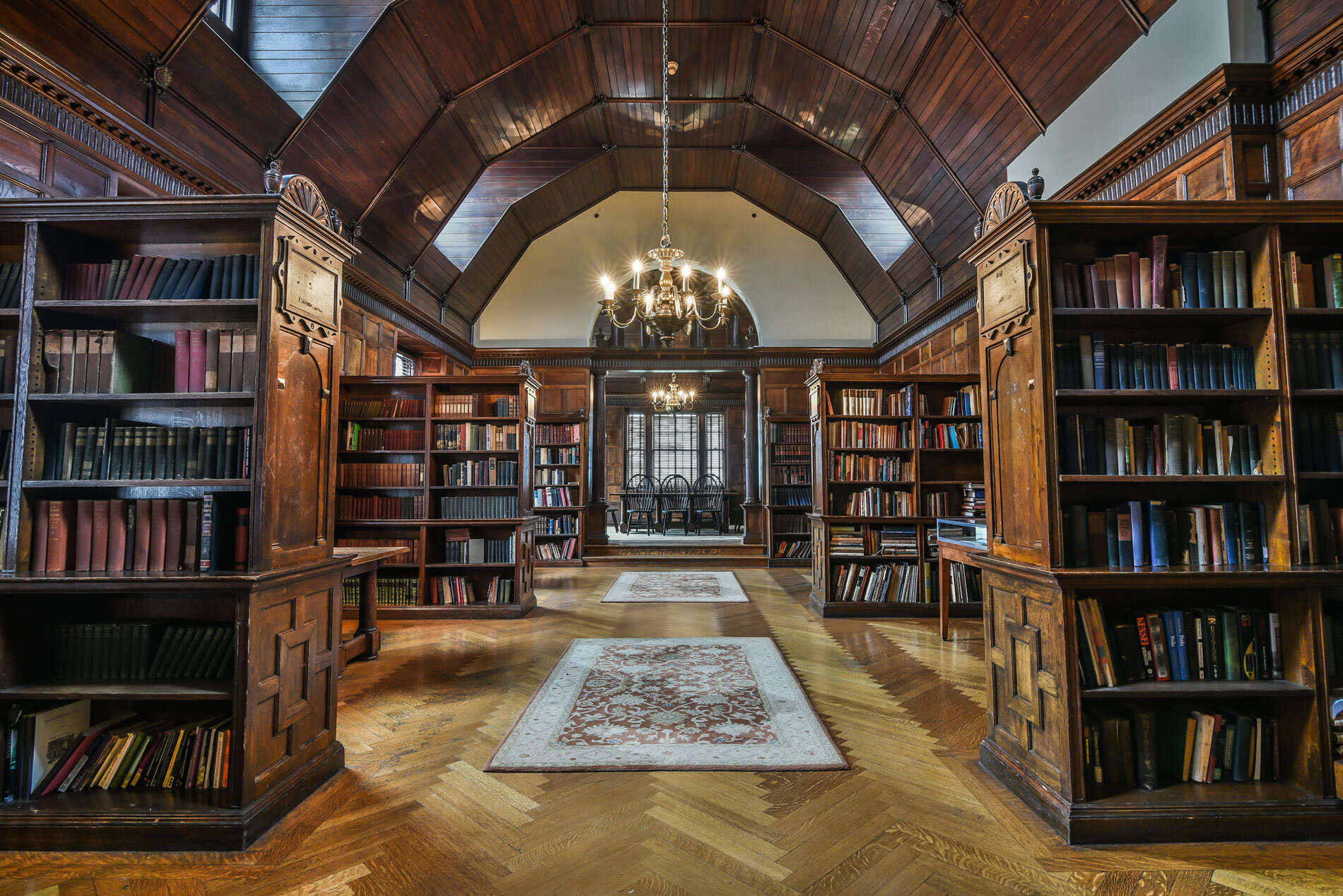
The library is the most impressive room at Cottage and was modeled after the 14th century Merton Library at Oxford. All library oak was also supplied by Morant and Company in London (the same dealer that supplied all of the Gallery wood). McKim measured the original library at Merton and made modern adjustments to fit the library space. One of the main features is the classical screen that divides the Library and the Writing Room. McKim placed the carved triple arch on a flat entablature, rather than on its own supporting arch as at Merton. Above are the music sheets written by Cottage members for the Princeton Cannon Song and The Guard of Old Nassau.
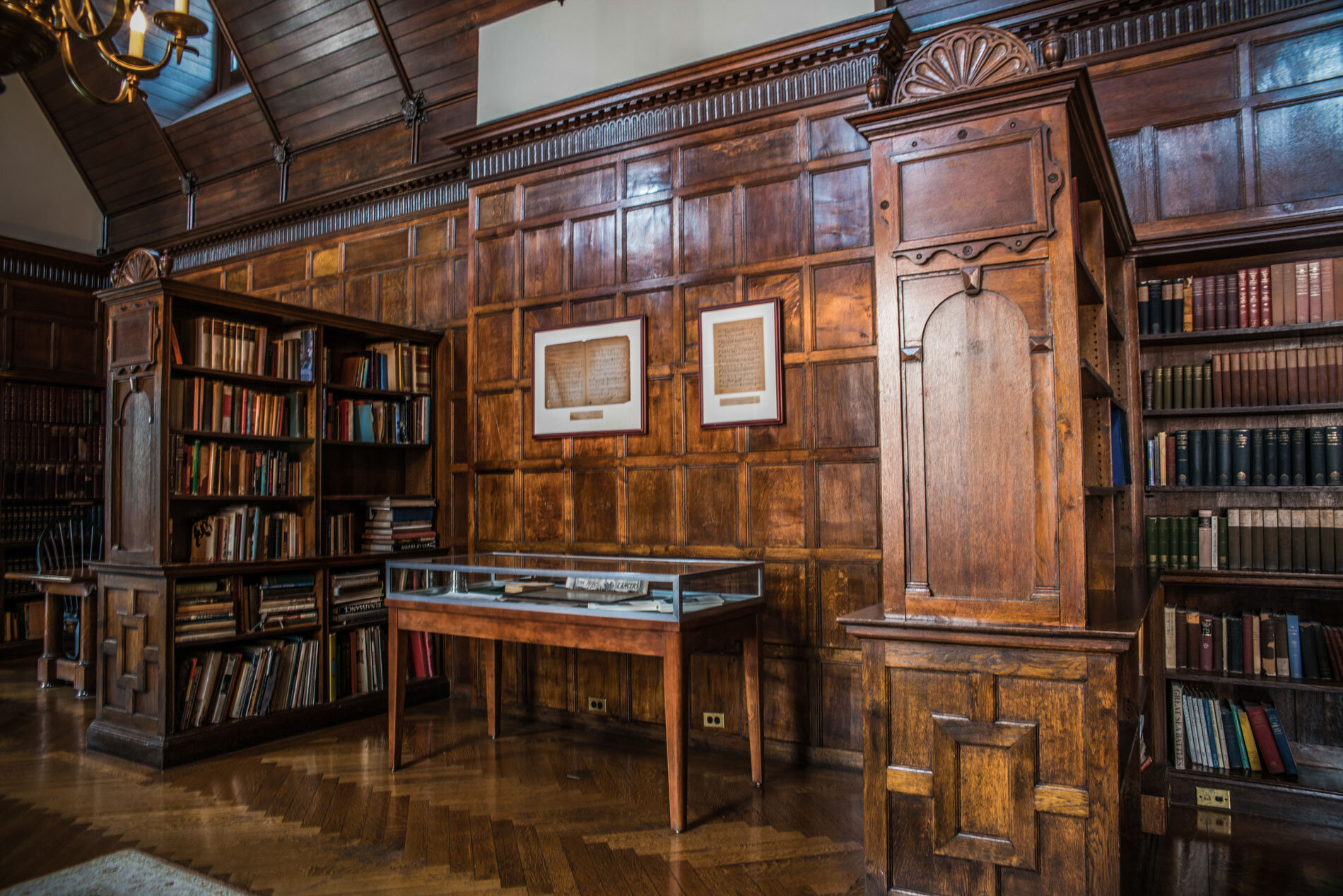
The 1994 movie I.Q. was filmed around Princeton and scouts chose the library for many of the scenes with Walter Matthau, Meg Ryan, Tim Robbins and actors playing Einstein’s friends. They were filmed in the Writing Room. On September 14, 1999, the Club was entered onto the New Jersey Register of Historic Places. On November 15, 1999, it was added to the National Historic Register of Historic Places based on the architectural structure of the building, high degree of historic integrity, and significant cultural contributions to the community. These recognitions will help to preserve and protect this historic treasure for future generations. Dean Mathey was once again the donor for the overhaul of the library light fixtures. He also paid for the organization and layout of the extensive book collection.
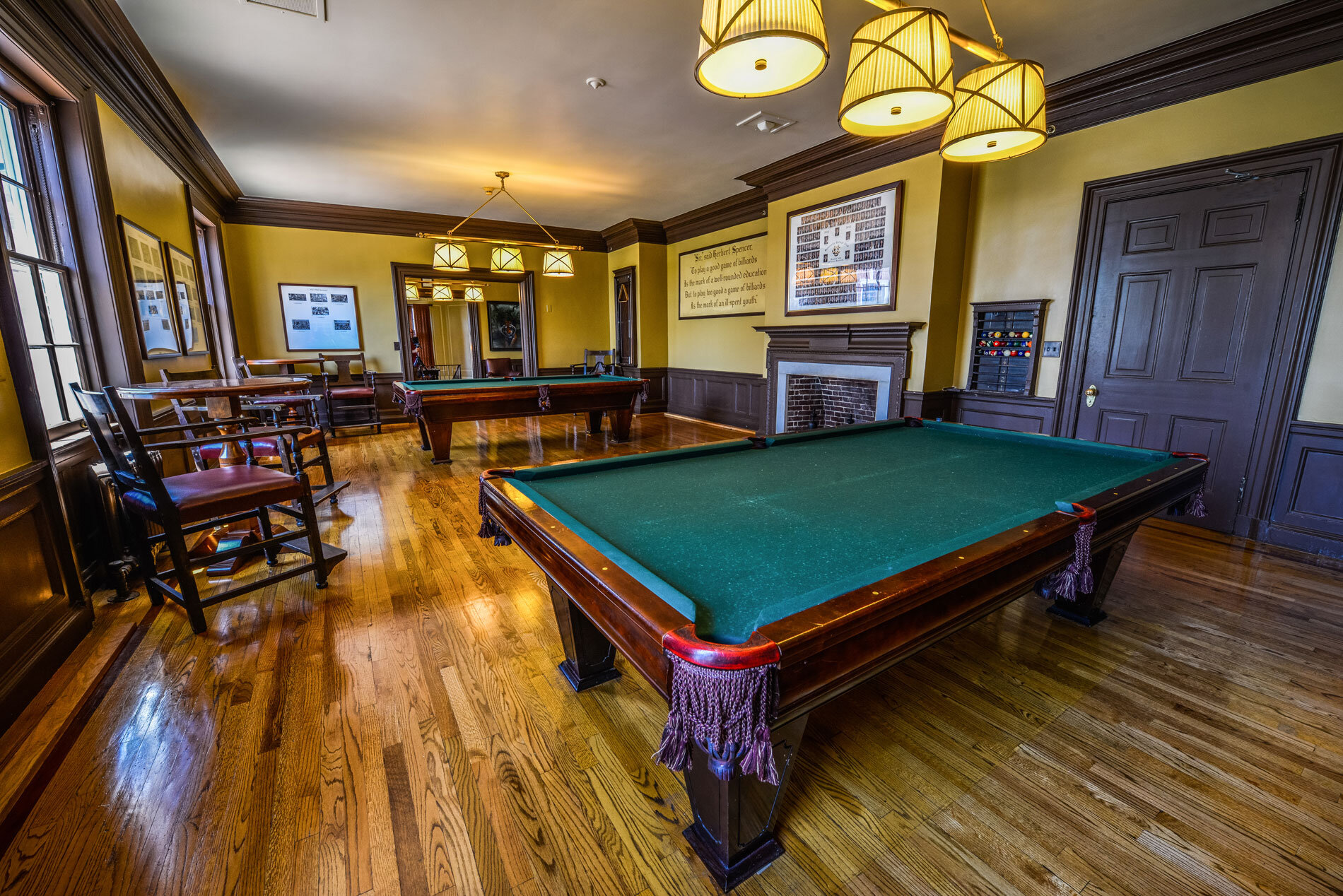
The Billiard Room is a more casual space than the formal rooms of the ground floor and library. It was originally called the Club Room. The early club members desired a less formal space, and this location on the second floor was seen as a space that they could make more comfortable. It seems that the dignity of McKim’s interiors was at first a little overwhelming to the college boys and their older brothers. The pocket doors allowed them to close themselves off from the rest of the clubhouse and made the space feel cozier when they were fraternizing in small groups. They raised $1000 to furnish the Club Room on their own. It originally had a card table, chairs and sofa. It later became the Billiard room and the pool tables were moved up from the first floor.
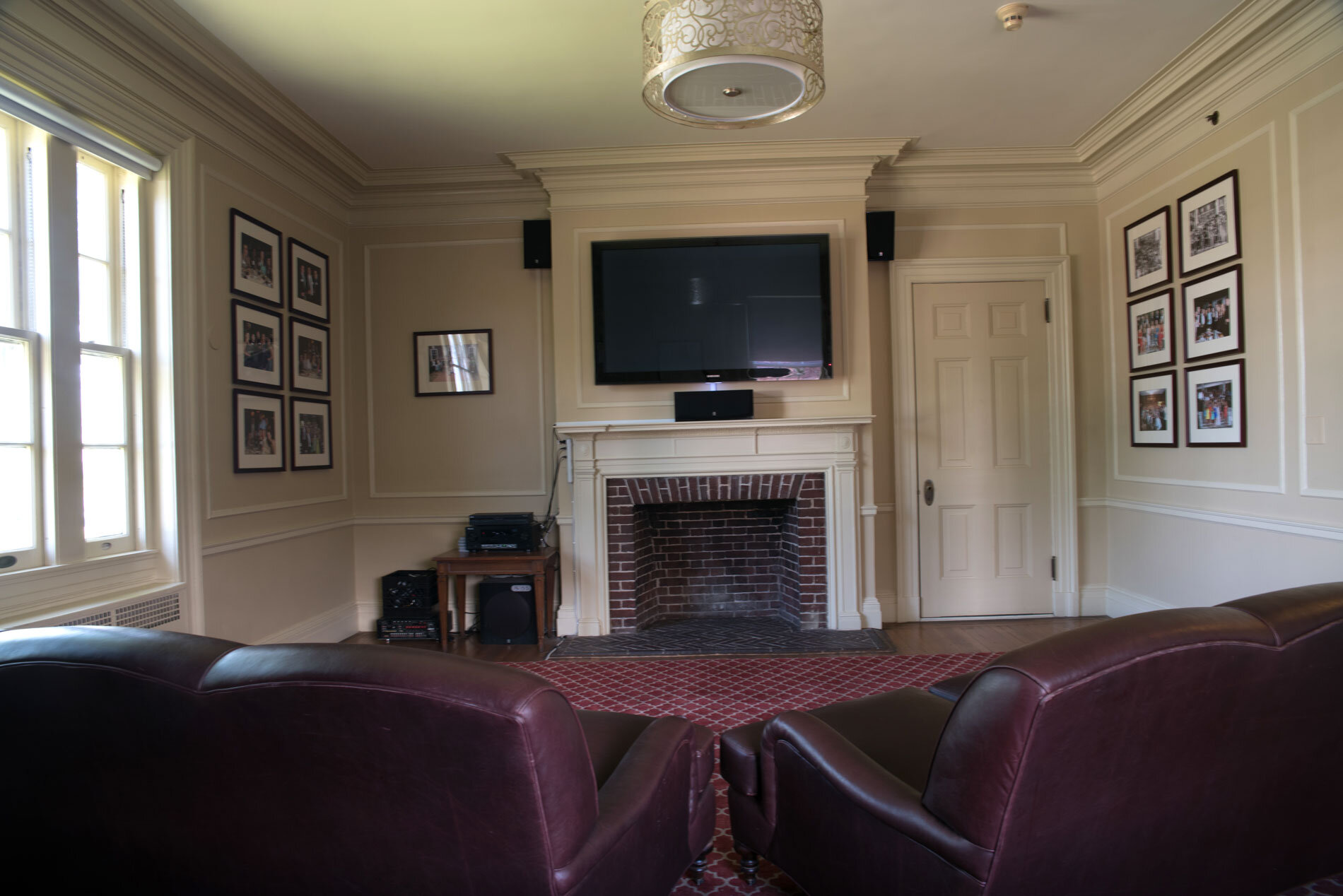
The TV room was originally a private dining room for visiting alumni and committee meetings. It was very common for these rooms to have been dining rooms according to the city club design.

The hallway memorializes Cottage history with various photos of the clubhouse in its original states of rental property humility, and eventually the grandiose McKim Georgian revival splendor that we have come to know as Cottage. The first photo on the left is of the first Cottage building rented in 1886 on University Place. This building housed four clubs in their beginning stages and was affectionately named “The Incubator.” The second photo shows the 1892 Cottage building on this site, which now also resides on University place. The ‘SEVEN WISE MEN OF GREASE’ are the original founders of the University Cottage Club. Club members who have served in the armed services: James Forrestal 1915 – US Secretary of the Navy 1944-1947, US Secretary of Defense 1947-1949; Breckenridge Long 1904 – US Ambassador to Italy in 1933 with Mussolini; Henry LaBouisse 1926 – US Ambassador to Greece; Livingston Merchant 1926 – US Ambassador to Canada; William Stevenson 1922 – US Ambassador to the Philippines, he was also an Olympic Gold Medalist in Track; Dick Kazmaier 1952 – Heisman Trophy Winner; Bill Bradley 1965 – Professional Basketball player.











Schedule a Historic Tour
Cottage Club is listed on the National and State of New Jersey Historic Registers. Tours are conducted by our Docent at the specified times for each date:
Historic Tours will resume in the fall.
To schedule a tour kindly contact us:
P: 609.921.6137
